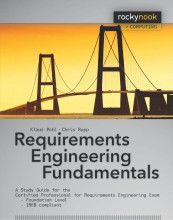Model-Based Requirements Documentation - Requirements Modeling in the Data Perspective
3 important questions on Model-Based Requirements Documentation - Requirements Modeling in the Data Perspective
What are the entity relationship diagram elements?
- Entity types: abstracts from the concrete characteristics of these entities and therefore classifies a set in the sense of the classification of uniform entities.
- Relationship types: classifies the set of uniform relations between entity types.
- Attributes: defines the properties of an entity type or a relation type.
- Cardinality: defines the number of relation instances that an entity may participate in.
Frequently used modeling elements of UML class diagrams are:
- Classes (with attributes and methods/operations).
- Associations (with multiplicities and roles).
- Aggregation and composition: describe a relationship between a whole and its constituents (a constituent in a composition cannot exist without its whole).
- Generalization relationships: a relationship between a more specific class (the sub-type) and a more general class (the super-type).
What are the characteristics of a use case Diagram?
- Simple model to schematically document the functions of a system from a user's perspective
- It documents the interralations of the functions of a system and the relations between these functions and their environment.
- It comprises of:
- Use cases
- Actors
- System boundaries
- include relation
- extend relation
The question on the page originate from the summary of the following study material:
- A unique study and practice tool
- Never study anything twice again
- Get the grades you hope for
- 100% sure, 100% understanding
































